 As has often been remarked, the original Justice League of America brought together the few super-hero properties DC had success with in the late '50s as Julie Schwartz's revival of the genre was gaining steam. Initially denied Superman and Batman by their respective editors, Wonder Woman, the Flash, Green Lantern, Aquaman and the Martian Manhunter were soon joined by Green Arrow, the Atom and Hawkman. Every one of these characters had their own solo feature, and given that it was 1960, all but one was a white male based in the U.S.A. It took nine years to add another woman, Black Canary, and that was via the bleeding heart liberal Denny O'Neil at what was arguably the birth of the Bronze Age.
As has often been remarked, the original Justice League of America brought together the few super-hero properties DC had success with in the late '50s as Julie Schwartz's revival of the genre was gaining steam. Initially denied Superman and Batman by their respective editors, Wonder Woman, the Flash, Green Lantern, Aquaman and the Martian Manhunter were soon joined by Green Arrow, the Atom and Hawkman. Every one of these characters had their own solo feature, and given that it was 1960, all but one was a white male based in the U.S.A. It took nine years to add another woman, Black Canary, and that was via the bleeding heart liberal Denny O'Neil at what was arguably the birth of the Bronze Age.
 That time period is well noted for progressive white men making bold, often ham-fisted attempts at developing characters of color for four-color adventures. Marvel Comics was the hipper company, and had greater success earlier on with African-American heroes like Black Panther (1966,) the Falcon (1969) and Luke Cage (1972,) Asians like Shang-Chi (1973,) and Latinos like White Tiger (1975.) At DC, John Stewart made his debut appearance as a Green Lantern in 1971, but he then went up on a shelf until 1977, and waited until 1984 to find a regular berth. Black Lightning got his own series in 1977, which was cancelled the following year, and a guest appearance in 1979 allowed Jefferson Pierce to become the first non-Caucasian to be offered Justice League membership (which he refused.) The Vixen was almost the first African super-heroine with her own book in 1978, but her unpublished introductory issue was part of a Cancelled Comic Cavalcade instead.
That time period is well noted for progressive white men making bold, often ham-fisted attempts at developing characters of color for four-color adventures. Marvel Comics was the hipper company, and had greater success earlier on with African-American heroes like Black Panther (1966,) the Falcon (1969) and Luke Cage (1972,) Asians like Shang-Chi (1973,) and Latinos like White Tiger (1975.) At DC, John Stewart made his debut appearance as a Green Lantern in 1971, but he then went up on a shelf until 1977, and waited until 1984 to find a regular berth. Black Lightning got his own series in 1977, which was cancelled the following year, and a guest appearance in 1979 allowed Jefferson Pierce to become the first non-Caucasian to be offered Justice League membership (which he refused.) The Vixen was almost the first African super-heroine with her own book in 1978, but her unpublished introductory issue was part of a Cancelled Comic Cavalcade instead.
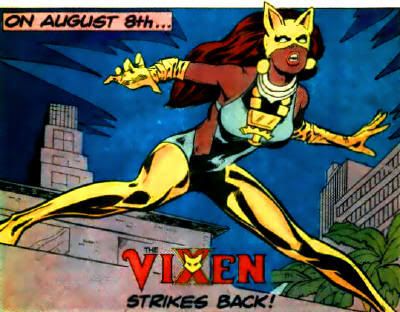 Arguably, the most successfully comic book example of multiculturalism was The All-New, All-Different X-Men, launched in 1975. While still majorly white, the Caucasians were at least of unusual nationality (Irish, German, Canadian, Russian,) and there were legitimate minorities in a Native American man, a Japanese male, and an African female. Two of the latter members were gone almost immediately, but Storm became one of the best known players in the group, heralded the start of what remains one of the most female-heavy teams in comics history. The success of the X-Men inspired much imitation, especially at DC, who soon found their best-selling title to be the highly derivative New Teen Titans (1980.) In fact, it would be safe to say that The Outsiders (1983) was more of a Titans wannabe, and included the aforementioned Black Lightning alongside DC's longest lived Asian heroine, Katana.
Arguably, the most successfully comic book example of multiculturalism was The All-New, All-Different X-Men, launched in 1975. While still majorly white, the Caucasians were at least of unusual nationality (Irish, German, Canadian, Russian,) and there were legitimate minorities in a Native American man, a Japanese male, and an African female. Two of the latter members were gone almost immediately, but Storm became one of the best known players in the group, heralded the start of what remains one of the most female-heavy teams in comics history. The success of the X-Men inspired much imitation, especially at DC, who soon found their best-selling title to be the highly derivative New Teen Titans (1980.) In fact, it would be safe to say that The Outsiders (1983) was more of a Titans wannabe, and included the aforementioned Black Lightning alongside DC's longest lived Asian heroine, Katana.
 The Justice League, ailing at the tail end of the Bronze Age, jumped on the bandwagon by making the team a bunch of scrappy upstarts joining sidelined veterans. The new Justice League of America was a home for writer Gerry Conway's failed Bronze Age concepts, including the Vixen (who had finally gotten into comics via some Superman team-ups in the early '80s,) and an update of Steel: The Indestructible Man alongside Conway inductee Zatanna and frequent guest star Martian Manhunter. Only Aquaman and Elongated Man were established long-standing members. Conway also added the quasi-ethnic Gypsy for youth appeal, and DC's first prominent Latin hero, Vibe.
The Justice League, ailing at the tail end of the Bronze Age, jumped on the bandwagon by making the team a bunch of scrappy upstarts joining sidelined veterans. The new Justice League of America was a home for writer Gerry Conway's failed Bronze Age concepts, including the Vixen (who had finally gotten into comics via some Superman team-ups in the early '80s,) and an update of Steel: The Indestructible Man alongside Conway inductee Zatanna and frequent guest star Martian Manhunter. Only Aquaman and Elongated Man were established long-standing members. Conway also added the quasi-ethnic Gypsy for youth appeal, and DC's first prominent Latin hero, Vibe.
 While black super-heroes have had their embarrassing moments, and Asians still have to take solace in manga from the sea of martial arts stereotypes representing them in Western books, I would argue that Latinos have seen some of the worst treatment of all minorities. No matter how poorly blacks were depicted in the Golden Age, they've had decades of quality champions since. Before 1984, DC's only notable Hispanic heroes were El Diablo (a Zorro riff in an old west setting) and Green Fury, a Brazilian heroine amidst the team of tokens known as the Global Guardians. Vibe represented more than Puerto Rico-- he was the first Latino on the premier super-team in comics. Unfortunately, Vibe was also emblematic of one of the most reviled line-ups in that team's history. Loud ugly clothes, a history in a cornball street gang, a thick phoney phonetic accent, liberal seasoning of random Spanish words in his dialogue, fad-mongering as a breakdancer, the revulsion of his own designer/co-creator Chuck Patton: Vibe was a complete embarrassment and a lightning rod for criticism of the group.
While black super-heroes have had their embarrassing moments, and Asians still have to take solace in manga from the sea of martial arts stereotypes representing them in Western books, I would argue that Latinos have seen some of the worst treatment of all minorities. No matter how poorly blacks were depicted in the Golden Age, they've had decades of quality champions since. Before 1984, DC's only notable Hispanic heroes were El Diablo (a Zorro riff in an old west setting) and Green Fury, a Brazilian heroine amidst the team of tokens known as the Global Guardians. Vibe represented more than Puerto Rico-- he was the first Latino on the premier super-team in comics. Unfortunately, Vibe was also emblematic of one of the most reviled line-ups in that team's history. Loud ugly clothes, a history in a cornball street gang, a thick phoney phonetic accent, liberal seasoning of random Spanish words in his dialogue, fad-mongering as a breakdancer, the revulsion of his own designer/co-creator Chuck Patton: Vibe was a complete embarrassment and a lightning rod for criticism of the group.
 Across the group's two year history, Vibe's look and attitude were toned down, but he still holds the distinction of being the first member of the Justice League of America to die. After the team's break-up, Vixen went on to join the Suicide Squad, appeared in several episodes of popular DC cartoons, had a solid run as part of Brad Meltzer's League, finally received her own (mediocre) mini-series, and even took part in the New 52 launch as part of Justice League International. Gypsy hasn't shown up yet, and while her ethnicity remains a muddy issue, as a c-list heroine she's done well for herself with cartoon cameos and membership in the Justice League Task Force and Birds of Prey. Vibe's brother turned up for a while in the planned-pathetic outfit the Conglomerate under the names Reverb and Hardline, who were forgettable enough that no one bothered to kill them off. Vibe's lasting legacy to date has been appearances as a ghost/zombie amongst the few Leaguers who maintained post-mortal status, and as a reminder of how poorly Latinos continue to be treated in comics.
Across the group's two year history, Vibe's look and attitude were toned down, but he still holds the distinction of being the first member of the Justice League of America to die. After the team's break-up, Vixen went on to join the Suicide Squad, appeared in several episodes of popular DC cartoons, had a solid run as part of Brad Meltzer's League, finally received her own (mediocre) mini-series, and even took part in the New 52 launch as part of Justice League International. Gypsy hasn't shown up yet, and while her ethnicity remains a muddy issue, as a c-list heroine she's done well for herself with cartoon cameos and membership in the Justice League Task Force and Birds of Prey. Vibe's brother turned up for a while in the planned-pathetic outfit the Conglomerate under the names Reverb and Hardline, who were forgettable enough that no one bothered to kill them off. Vibe's lasting legacy to date has been appearances as a ghost/zombie amongst the few Leaguers who maintained post-mortal status, and as a reminder of how poorly Latinos continue to be treated in comics.
 Since Vibe's death, little has changed for the Latin super-hero community. The very Caucasian looking Aztek squeaked by for a year in a solo series, but was killed in a minor "event." A few modern El Diablos have come and gone, one another gangbanger. The less said about the late Extraño, the better. Gangbuster never amounted to anything. Firebrand III died early and not at all well. Most of the rest were similarly "legacies" of original white characters, and most are similarly quite dead, a notable exception being the Jaime Reyes Blue Beetle. While Marvel also offered "colored" versions of established white heroes, DC made it the hallmark of their ethnic outreach, and their most prominent minorities remain the "Black Superman" (Steel,) "Black Batman" (Batwing) and so on. However, Marvel has had no more success with Latin heroes, ranging from early misfires like El Águila to dual tokens like Living Lightning (gay) and Firebird (evangelical catholic) to the triple threat of bland copies of copies like Araña. When Sunspot is your #1 creation from south of the border, the unintentional comedy of Vibe is comparatively attractive.
Since Vibe's death, little has changed for the Latin super-hero community. The very Caucasian looking Aztek squeaked by for a year in a solo series, but was killed in a minor "event." A few modern El Diablos have come and gone, one another gangbanger. The less said about the late Extraño, the better. Gangbuster never amounted to anything. Firebrand III died early and not at all well. Most of the rest were similarly "legacies" of original white characters, and most are similarly quite dead, a notable exception being the Jaime Reyes Blue Beetle. While Marvel also offered "colored" versions of established white heroes, DC made it the hallmark of their ethnic outreach, and their most prominent minorities remain the "Black Superman" (Steel,) "Black Batman" (Batwing) and so on. However, Marvel has had no more success with Latin heroes, ranging from early misfires like El Águila to dual tokens like Living Lightning (gay) and Firebird (evangelical catholic) to the triple threat of bland copies of copies like Araña. When Sunspot is your #1 creation from south of the border, the unintentional comedy of Vibe is comparatively attractive.
 As a Texan, I know what the future of America looks like. A decade ago, Latinos were a close second to whites as customers in my shop, and I wouldn't be at all surprised if local stores today host Latinos as a majority. Mexican and South American culture have long embraced comics in a way North America has really only begun to. We just saw our presidential election decided by the Latin vote, and as our populations blend, now is the time to offer strong Hispanic heroes if we want our preferred brand of funny book to stand a chance against the sway of anime all-stars. As much as I enjoyed the Magnificent Seven in their day, entrenched history and the expectations of the icons seem to have frozen that lot in a numbing stasis that requires a Grant Morrison to pull them off as engaging entertainment.
As a Texan, I know what the future of America looks like. A decade ago, Latinos were a close second to whites as customers in my shop, and I wouldn't be at all surprised if local stores today host Latinos as a majority. Mexican and South American culture have long embraced comics in a way North America has really only begun to. We just saw our presidential election decided by the Latin vote, and as our populations blend, now is the time to offer strong Hispanic heroes if we want our preferred brand of funny book to stand a chance against the sway of anime all-stars. As much as I enjoyed the Magnificent Seven in their day, entrenched history and the expectations of the icons seem to have frozen that lot in a numbing stasis that requires a Grant Morrison to pull them off as engaging entertainment.
 The newer new Justice League of America offers a good deal more story options and opportunities to surprise. Further, it is difficult to see a "Magnificent Seven" Justice League translating to live action in a way that isn't laughable. Characters like Simon Baz, Katana and a revitalized Vibe offer audiences the America to come, rather than a vision of bygone eras, and that diversity extends toward separating this lot from the very profitable and well regarded Avengers. Viewers have already rejected a Ryan Reynolds Green Lantern when they already have Robert Downey Jr.'s Iron Man, and I can tell you from experience that Catwoman is more a role model to modern ladies than Wonder Woman. Marvel may have miraculously pulled off your father's Avengers, but how much of a chance does Warner Brothers have with a Grand Old Justice League as competition in a United States that is ever more soundly rejecting dreams of a Caucasian ruling class of godlings.
The newer new Justice League of America offers a good deal more story options and opportunities to surprise. Further, it is difficult to see a "Magnificent Seven" Justice League translating to live action in a way that isn't laughable. Characters like Simon Baz, Katana and a revitalized Vibe offer audiences the America to come, rather than a vision of bygone eras, and that diversity extends toward separating this lot from the very profitable and well regarded Avengers. Viewers have already rejected a Ryan Reynolds Green Lantern when they already have Robert Downey Jr.'s Iron Man, and I can tell you from experience that Catwoman is more a role model to modern ladies than Wonder Woman. Marvel may have miraculously pulled off your father's Avengers, but how much of a chance does Warner Brothers have with a Grand Old Justice League as competition in a United States that is ever more soundly rejecting dreams of a Caucasian ruling class of godlings.
 Vibe may not have a lot of cache, but at least he isn't the second version of a white hero, and his last days include some of the best and least heralded JLA comics ever produced. Vibe has places to go, potential to explore, and I'm a lot more interested in where that takes him than in the further retrograde adventures of Hal Jordan and Barry Allen. It isn't about exclusion, as Hawkman, Green Arrow and Steve Trevor are still in there, while Stargirl could be the face of the Midwest if one were so inclined to canvas for one. Justice League Detroit was a Jimmy Carter team in Ronald Reagan's America, but the morning is long past and halftime has arrived. If Motor City truly is fighting again, maybe a Detroit League finally can be done properly, and place the Justice League on the right side of history. If Vibe can be redeemed, anything else is possible.
Vibe may not have a lot of cache, but at least he isn't the second version of a white hero, and his last days include some of the best and least heralded JLA comics ever produced. Vibe has places to go, potential to explore, and I'm a lot more interested in where that takes him than in the further retrograde adventures of Hal Jordan and Barry Allen. It isn't about exclusion, as Hawkman, Green Arrow and Steve Trevor are still in there, while Stargirl could be the face of the Midwest if one were so inclined to canvas for one. Justice League Detroit was a Jimmy Carter team in Ronald Reagan's America, but the morning is long past and halftime has arrived. If Motor City truly is fighting again, maybe a Detroit League finally can be done properly, and place the Justice League on the right side of history. If Vibe can be redeemed, anything else is possible.Post-Racial DC Comics?
- Victor Stone: Affirmative Action Cyborg @ DC Bloodlines
- All The World Is Waiting For Nubia! @ Diana Prince is the New Wonder Woman
- The Atom: Big Little Man @ Power of the Atom
- Race & Mars @ The Idol-Head of Diabolu


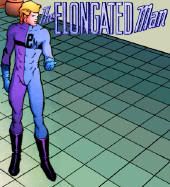
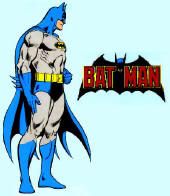
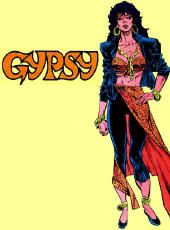

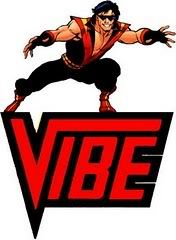
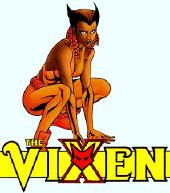

3 comments:
nice
This is a damn good write up my friend.
Matt, the distinction is debatable. Both Spain and Portugal were born out of ancient Hispania, there's a lot of common history, and the Portuguese-settled Brazil is surrounded by the Spanish's South America. Either way, we're talking about a European Caucasian race intermingled with indigenous peoples and later settlers, with both Vibe and Fire falling on the whiter side of the line. I'll concede though that "Latino" would have been clearer and less controversial, and I was using it interchangeably with "Hispanic" to avoid repetition.
Post a Comment